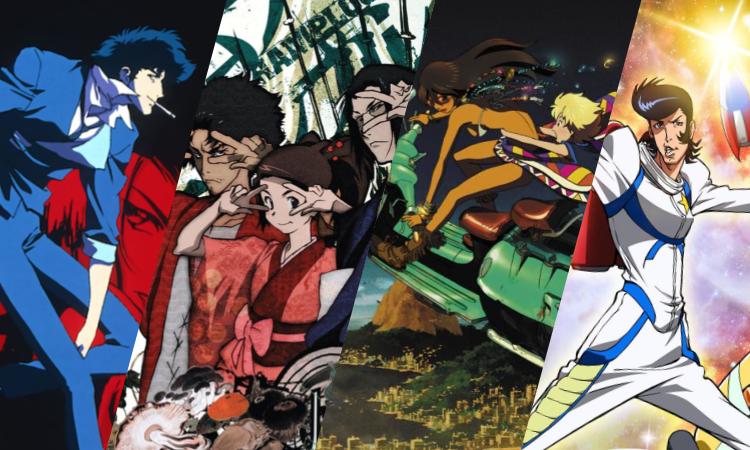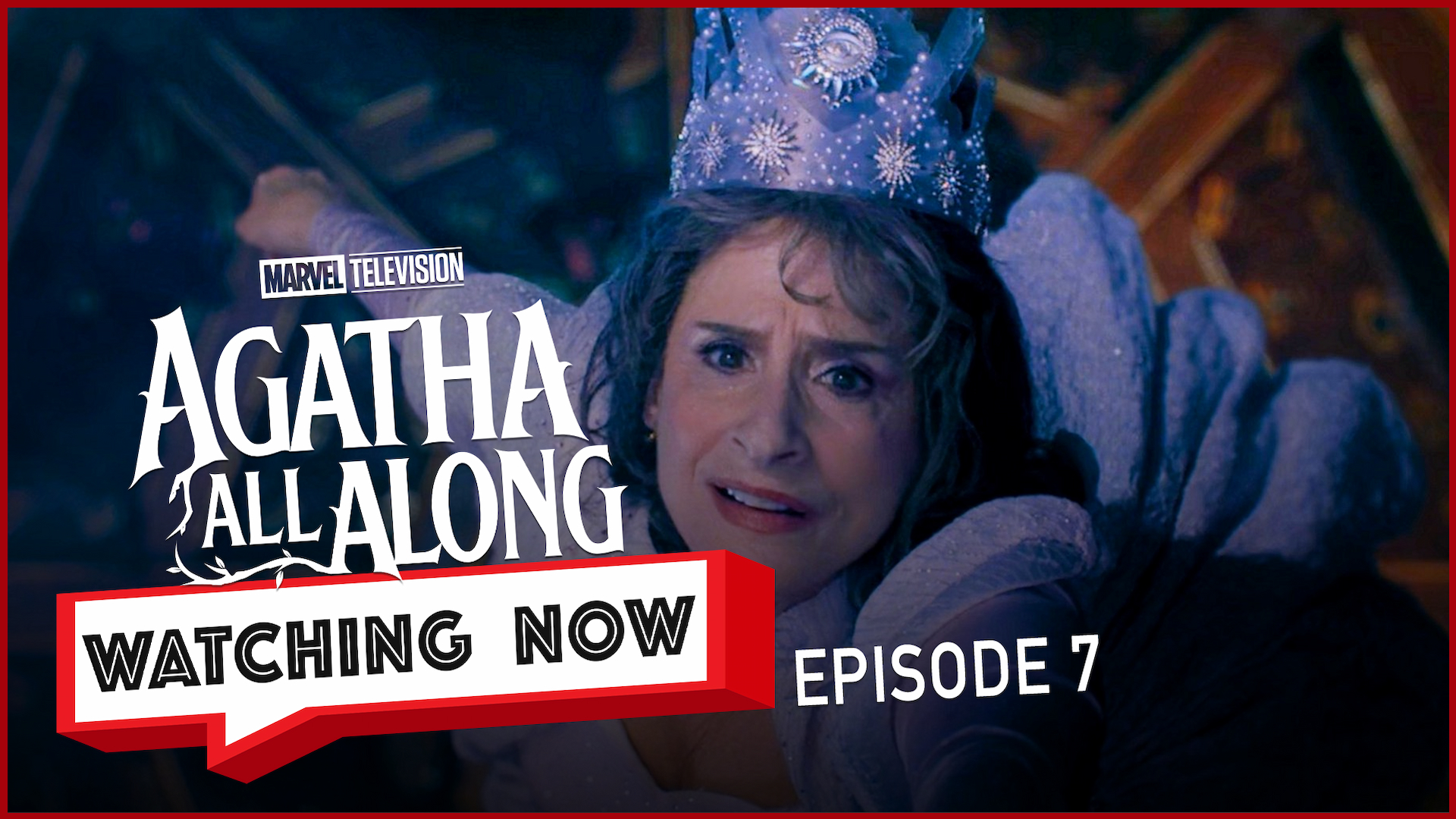
To be in a road anime from Shinichirō Watanabe, you have to meet two requirements. First, be in a traveling group of at least two people. Second, almost always be starving or strapped for cash (preferably both). Meet those requirements and you can travel through outer space, Edo-period Japan, or modern South America and encounter all sorts of interesting people. Just don’t expect to stay idle for very long…
Shinichirō Watanabe is best known for directing the original Cowboy Bebop anime, but lots of his other work follows similarly well-developed characters traveling through detailed landscapes: Samurai Champloo, Michiko & Hatchin, and Space Dandy. While Watanabe’s work isn’t restricted to the road genre, many would argue that he excels in it. Each of his episodic road anime is unique and full of memorable characters, exploring ideas thoughtfully while also being downright captivating. The following are profiles of Watanabe’s road anime that aim to express what makes them so special and essential.

Starting with a section about Cowboy Bebop is necessary, but summing it up so quickly is difficult, to say the least. It’s a quintessential series, one that has been talked about time and again, and for good reason. The characters are iconic, the score by Yoko Kanno has reached legendary status, and the storytelling has been said to be some of the best in anime history. That storytelling is also home to some very deliberate pacing: it takes nine episodes for the “full” crew of the bounty-hunting Bebop to assemble. This is not only unusual for most road-traveling series, but it’s also unique to the other anime discussed here. This slow ramp-up makes the episodes where the whole crew works together all the more valuable.
Cowboy Bebop is a Watanabe series that anyone should be able to try out with ease and little introduction… and there’s also the high probability that 95 percent of those reading this are familiar with the series at least by its title. It was (and is) a phenomenon, one whose success catapulted Watanabe and others onto future high-profile projects, including the 2-hour Bebop film Knockin’ on Heaven’s Door from 2001 and the following series from 2004.

The enthralling Samurai Champloo begins with three distinct characters crossing paths: the reckless, sword-swinging Mugen, talented rōnin Jin, and the resourceful girl who keeps them in check, Fuu. After Fuu rescues the other two from being executed (it’s a long story), she convinces them to help her find a samurai “who smells of sunflowers.”
Samurai Champloo immediately sets itself apart from Cowboy Bebop, not only in terms of setting (outer space to 1600s-ish Japan is quite the jump), but also in who receives the most attention. Whereas Spike can easily be identified as the main character of Cowboy Bebop, the same cannot be said for any one member of Samurai Champloo‘s trio. Mugen, Jin, and Fuu are given about the same amount of development across 26 episodes. The series is able to make them triple protagonists without even compromising on well-written side characters. From the tragic Shino in “Gamblers and Gallantry” to the teacher from the school of hard knocks in “War of the Words,” there are plenty of minor characters who leave an impression.
Mix this with impressive action sequences and an adaptable hip hop soundtrack by Nujabes, Fat Jon, Force of Nature, and Tsutchie, and you have an anime that rivals Cowboy Bebop in quality and rewatchability. Also, the episode “Baseball Blues” is a comedic masterpiece.

This one is a bit of a cheat: Watanabe is the music selector and producer for this series, not the director. That credit would go to Sayo Yamomoto who previously worked with Watanabe on Samurai Champloo and would continue to do so on multiple other projects. However, I’d say their strong collaborative relationship and Michiko & Hatchin‘s on-the-road style make this 2008 anime more than qualified for a spot here.
The series follows Hana “Hatchin” Morenos, who flees her cold and abusive foster family, and Michiko Malandro, the outlaw who provided her with that opportunity. They hit the road in search of Hiroshi, an old flame of Michiko’s and the (considered dead) father of Hatchin. However, things never seem to stay calm as the police are constantly after Michiko and the two always manage to find trouble—including discord between themselves.
Michiko & Hatchin has all of the workings of a great anime, but it is the relationship between the two main characters that defines the series. Their development is entertainingly sweet, especially considering that they’re almost polar opposites who frequently bicker for the series’ beginning stretch. All of this and more plays out in an unusual locale for anime (the fictional South American country of Diamandra), making Michiko & Hatchin a singular and memorable ride.

Last, but certainly not least, is this 26-episode series about a trio of alien hunters combing the galaxy for rare alien species. But unlike the bounty hunters on the Bebop, rōnin on the road, and criminal cruising through Diamandra, these three make a living by more conventional means: they capture new creatures to log at the Alien Registration Center. The “Aloha Oe” crew consists of the pompadour-sporting Dandy, robotic QT, and suspiciously feline-like Meow (real name Mymyamo, but nobody else can pronounce it).
Space Dandy leans toward comedy much more than the other series. As proof, look no further than the restaurant the trio frequent, BooBies, which is exactly what it sounds like. Stopping there would sell the series’ humor short, though. On top of its sillier gags, Space Dandy is home to some clever jokes and downright perfect comedic timing. The latter is helped by the spectacular voice work done by the English cast, which, in a rare turn of events, was released before the Japanese version on the pre-Japan Toonami airings. (One of the English dub team’s best decisions was to put QT’s voice through a hilariously heavy layer of autotune.)
Don’t let the intergalactic Hooters chain fool you, though. Space Dandy is “dumb” at times, sure, but it is deceptively dumb. Watanabe and the diverse crew of writers pulled together for the series manage to put in poignant, even touching moments as early as Episode 5. Episodes 15 and 21 are especially serious, but there are parts all throughout that you wouldn’t expect to find in a comedy anime. The variance is thanks to the creative freedom the writers and animators were given; many episodes look and feel completely distinct, although still part of Space Dandy‘s world.
As it stands, Space Dandy is Watanabe’s most recent foray into the road genre. Given his affinity for it, Watanabe may very well return to the genre—whether that’s on land, air, or sea is anybody’s guess. If he doesn’t, Space Dandy is a fantastic place to leave off.
I’d even say it’s a dandy way.



